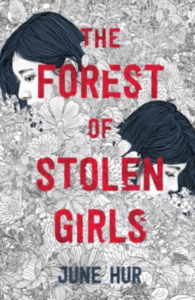
Image from the Native American House Library at UIUC
“I/We would like to begin today by recognizing and acknowledging that we are on the lands of the Peoria, Kaskaskia, Piankashaw, Wea, Miami, Mascoutin, Odawa, Sauk, Mesquaki, Kickapoo, Potawatomi, Ojibwe, and Chickasaw Nations. These lands were the traditional territory of these Native Nations prior to their forced removal; these lands continue to carry the stories of these Nations and their struggles for survival and identity.
As a land-grant institution, the University of Illinois has a particular responsibility to acknowledge the peoples of these lands, as well as the histories of dispossession that have allowed for the growth of this institution for the past 150 years. We are also obligated to reflect on and actively address these histories and the role that this university has played in shaping them. This acknowledgement and the centering of Native peoples is a start as we move forward for the next 150 years.”
The above statement is a land acknowledgment suggested by the Native American House at UIUC. Land acknowledgements are read at the start of events, meetings, or other gatherings to center the Indigenous Nations whose lands we occupy and recognize that the violent histories of settler colonialism that displaced them are very much still ongoing. In addition to the adoption of land acknowledgements, greater cultural emphasis has been placed on Indigenous liberation, especially around national holidays like Columbus Day and Thanksgiving. As many of us prepare to head home for a well-deserved break, we invite you to take a moment to reflect on the problematic history of Thanksgiving.
We all know the story; the brave Pilgrims boarded the Mayflower in search of religious freedom and arrived at what is now called Plymouth. At first they struggled to inhabit the land, but their friendly neighbors, the Native Americans, welcomed them and showed them how to plant corn. To celebrate their first successful fall harvest and the friendship between groups, a huge feast is thrown, marking the first Thanksgiving. As historian David J. Silverman wrote in the New York Times, “the Indians’ legacy is to present America as a gift to white people — or in other words, to concede to colonialism.”
This myth erases the violence that both preceded and followed the alliance between the Wampanoags — the tribe often unnamed in the Thanksgiving story — and the Pilgrims. Many Americans believe that the meeting at Plymouth Rock was the first contact between settlers and Indigenous people, however European colonists had been arriving in the Americas for almost a hundred years prior, bringing with them diseases and war. Silverman argues that the Wampanoags agreed to the alliance with the Pilgrims in part to avoid the violence that they had become accustomed to from settlers. As the US colonies expanded to occupy more land, Indigenous populations were terrorized by white settlers, forcibly removed from their ancestral lands or into repressive assimilation programs. The myth of Thanksgiving sanitizes a genocide.
This history is disturbing, but important to confront, and this post is far from comprehensive. While you gather around the turkey, take a moment to share what you’ve learned with your family. Whether this information is new to you or not, consider learning more about Indigenous history and modern life. Some great books to start with include An Indigenous Peoples’ History of the United States by Roxanne Dunbar-Ortiz and Braiding Sweetgrass by Robin Wall Kimmerer, both available in the U of I Collection.
Written by: Danny
Posted by: Darian





















